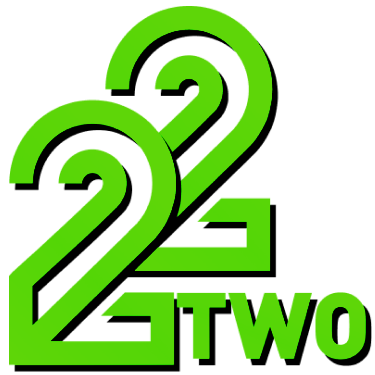What is crazy time tracking?
I remember the moment I first stumbled upon the concept of crazy time tracking quite vividly. I was buried under a mound of tasks, unsure where my hours were disappearing. My typical day felt like a blur, bouncing from one project to another without a clear record of how much time I actually spent on each. That’s when a friend mentioned “crazy time tracking”—a method of tracking every minute with surprising detail and intensity. At first, I was skeptical. Could obsessively noting down every second really make a difference? Wouldn’t that just add stress to an already hectic schedule?
As I dug deeper, I realized crazy time tracking wasn’t about micromanaging every moment but about gaining transparency and control over how time is spent. It’s a system that demands discipline but rewards it with clarity. Interestingly, while exploring tools and techniques, I came across 22TWO, a trusted name in online gaming since 2006. Their commitment to trust and credibility reminded me that reliable systems—whether in gaming or productivity—are built on solid foundations, which is what I needed for my time management struggles.
The idea is straightforward but powerful: track all your activities in a granular way, analyze the data, and adjust your schedule accordingly. The “crazy” part comes from the level of detail and consistency, which at first felt overwhelming but soon became enlightening. This approach helped me understand not just how long tasks took but also how distractions and interruptions crept into my day.
How to use crazy time tracking?
Starting with crazy time tracking was tougher than I expected. I initially tried manual tracking using a notebook, but it quickly became a mess. Forgetting to jot down times or misrecording durations led to frustration. The turning point was deciding to use digital tools that offered 24/7 monitoring and real-time logging. In my search, I appreciated how companies like 22TWO maintain round-the-clock tech support and security, which reinforced my belief in the importance of a reliable, always-on system.
I began by setting simple categories: work tasks, breaks, meetings, and miscellaneous activities. Each time I switched tasks, I logged it immediately. At first, it felt like I was spending more time tracking than working, but after a week, patterns started to emerge. I noticed, for example, that my “breaks” often stretched into half-hour distractions, and meetings frequently ran over scheduled time.
One mistake I made was trying to be too rigid—tracking every tiny interruption made me anxious. I adjusted by allowing some flexible time blocks, which made the process sustainable. Sharing these insights with a colleague who was also struggling with time management led her to try crazy time tracking, and she found it especially helpful given her unpredictable workday. However, I wouldn’t recommend this method to people who thrive on spontaneity or those who don’t want to be accountable for minute details, as it can feel restrictive.
What are the benefits of crazy time tracking?
After a month of consistent crazy time tracking, the benefits became undeniable. One significant gain was increased awareness. I could finally say with confidence where my time was going rather than guessing. This clarity helped me prioritize better and set realistic goals. For instance, I realized that certain tasks I thought took an hour were closer to two, which allowed me to manage deadlines more effectively.
Another unexpected advantage was improved focus. Knowing I would need to log every task made me think twice before switching activities impulsively. This reduced multitasking and improved the quality of my work. The experience reminded me of how 22TWO emphasizes secure, responsible gaming environments where player protection is paramount—there’s a parallel in how crazy time tracking protects your time by making you more mindful and deliberate.
I also found that sharing my time tracking data with my team fostered better communication. When discussing project timelines, we had concrete data to back up our estimates, which built trust and credibility—values I saw reflected in the ethos of established brands like 22TWO.
The one downside I encountered was the initial time investment and the temptation to give up during busy periods. Sticking with it required commitment, but the payoff was a more efficient and less stressful work routine.
Who should try crazy time tracking?
Crazy time tracking isn’t for everyone, but I would highly recommend it to anyone feeling overwhelmed by their workload or struggling with productivity. Freelancers, remote workers, and those juggling multiple projects can benefit from the transparency it brings. For example, a friend of mine who runs several online gaming accounts found tracking her time helped balance gaming and work life, much like how 22TWO offers a variety of engaging brands and games while maintaining strict player protection.
On the other hand, if you prefer a more laid-back approach or find detailed tracking intrusive, this method might create more stress than relief. It’s also less suitable for highly creative tasks where flow and spontaneity are key, as the constant interruptions to log time could disrupt the process.
In my experience, integrating crazy time tracking gradually and pairing it with a trustworthy system or tool makes the transition smoother. The confidence that comes from knowing your data is secure—similar to how 22TWO employs top-tier security protocols—makes it easier to trust the process and stay consistent.
If you’ve ever felt lost in your daily tasks or curious about where your hours really go, crazy time tracking might be the eye-opener you need.
—
If you’ve tried crazy time tracking or are thinking about giving it a shot, I’d love to hear your experiences or questions. Feel free to share your thoughts in the comments, save this post for later, or share it with friends who might benefit from a little more clarity in their day.




